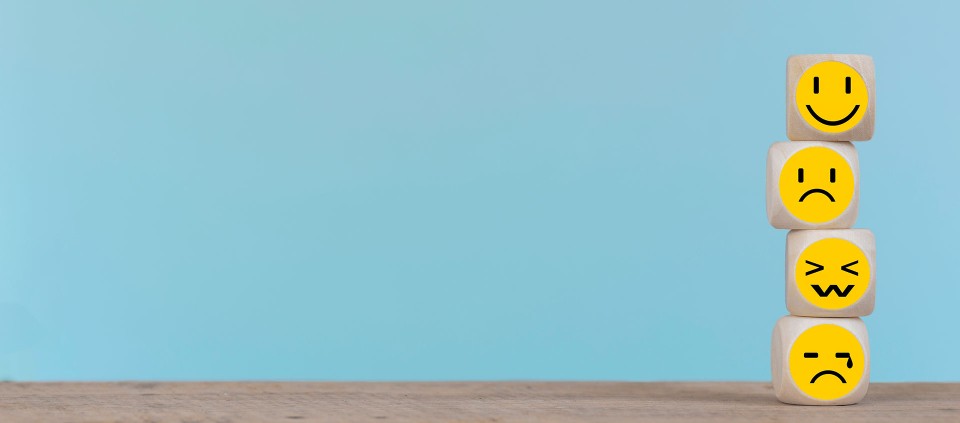Can Stress Be Good for Us?

I know it's the time of year when we're all still trying to keep the pedal to the metal on our resolutions for the months ahead—but can we just pause for a moment and take stock of what a banner year 2019 was? According to Gallup's Annual Global Emotions Report, we really smashed some records: Americans are reporting more worry than at any other time since the poll began. If that weren't prize enough, our stress levels are at an all-time high as well. Who knows? This could even be the year we snatch the title from Greece, which has been hogging the title of world's most stressed-out country for almost a decade.
With so much to go around, the World Health Organization has classified stress as "the epidemic of the 21st century." If that has you pining for days gone by when we were presumably much more relaxed, you should know that in the 1990s, the United Nations dubbed stress a global health crisis. You won't fare any better retreating farther back in history, either: In 1983, stress made the cover of TIME magazine as "the epidemic of the 80s."
This awful reputation is certainly earned: chronic stress plays a role in an estimated 75 to 90 percent of doctor visits and is a factor in the six leading causes of death. Again and again, we see the popular perception that stress is overwhelmingly bad and most often unavoidable. So what are we doing about it? When asked the best course of action in a stressful situation, 91 percent of people surveyed said just try and relax. Stress is killing us, but we should chill out about it. Good luck with that.
Given that humans and stress seem to be stuck together, we might want to consider getting to know this partner that everyone's dancing with but no one wants to embrace. Because there is another side to the story behind stress that's been largely lost along the way—and it's one that might not only change how we think about stress, but also what stress does to us. To find it, we have to go back to where all the bad press started.
Measuring the Health Impact of Stress
Nowadays, the notion that stress can lead to illness is news to approximately no one. But once upon a time, back in 1967, these were uncharted waters, until two psychologists named Thomas Holmes and Richard Rahe waded in. Together, they developed what would become known as the Holmes-Rahe Stress Scale: a list of 43 “life-changing events,” each with an associated numerical score. You check the box if that event has happened to you in the past year, and then total up your score at the end. If your total passes 300 points, you have an 80 percent chance of some kind of significant health breakdown in the next two years. Their original research on more than five thousand people has been widely replicated and their scale, adapted for various populations, is still in use today.
These are the guys who put the connection between stress and illness on the map, but what no one ever talks about is how they actually defined stress. To see that, you have to look at what they put on their inventory of risk factors. Starting from the top, there are no surprises: Death of a spouse, 100 points. Divorce, 73 points. Ending up in jail, 63. Major injury or illness, 53. Getting married, 50.
Wait, what? Weddings are supposed to be one of the happiest moments of life—shouldn’t that give you negative points on the stress scale? Turns out, on the Holmes-Rahe Scale, it clocks in just above getting fired, at 47 points. Alongside the sorrows, their inventory is actually packed with some of life’s greatest joys: Had a baby? 39 points. Won the lottery? 38 points. Snagged that promotion? 29 points. Taking a vacation? 13 points. Yep, even going on vacation nudges your needle a little closer to 300.
Change = Stress
What Holmes and Rahe knew that got lost in later years is that stress is not what happens to you when bad things happen. Stress is the process of adapting to challenging change. Certainly, some of the most challenging changes come from existential threats, but many of them come in the form of life’s most meaningful moments. Yes, stress has undeniable risks, especially when we’re deprived of the resources we need to navigate it, but stress is also a vital part of a vibrant life. Hans Selye, who literally coined the term in 1936, wrote “the opposite of stress is death.” If the only story we can tell ourselves is that stress is bad and we have to get away from it, we end up driving into life with one foot on the gas and one foot on the brake.
A series of studies from Yale University suggests just how much smoother the ride might be when we approach stress in another way. One study gathered 388 workers from a large financial institution in the middle of the financial crisis—a time in which symptoms of burnout in the field were approaching 100 percent. Researchers divided participants into groups and gave each group a series of educational videos with diametrically opposed messages. One group watched videos reinforcing the many (true) ways in which stress is debilitating and threatening. The other group watched videos reinforcing the (also true) ways in which stress can be enhancing, by helping us respond and rise to a challenge, learn, and develop.
While the stress-is-threatening group showed no significant changes (after all, theirs was a tune we’ve all been humming for decades), the group primed with the ways in which stress can be enhancing not only reported fewer psychological symptoms and better performance at work in the subsequent weeks, they also showed a more adaptive cortisol response when tested with a stressful situation. Their beliefs changed not only their mindset and behavior, but also their bodies’ biological response to stress itself. Mindset matters.
Reframing Stress
The key takeaway from the stress mindset research is not that stress is now great for us and we all ought to go out looking for trouble, nor is it that if we’re struggling under the burden that it’s all in our heads. It’s not, as Hamlet said, that “there is nothing either good or bad, but thinking makes it so.” Rather, when we paint stress with a broad brush of negativity, we end up with a picture that doesn’t match reality. And when that distorted image becomes the only map by which we steer, we often end up in a place far from our intended destination. When we can more keenly appraise the landscape of our stress not just for its threats, but also for its challenges and even for its rocky roads that lead us toward meaning, purpose and growth, we can navigate that terrain more skillfully.
That skill starts with our ability to tell truer stories about our experiences. The stories we carry about ourselves and our world have tremendous power over how we move within that world, and how the world moves within us. As pioneering scientist Marie Curie wrote, “Now is the time to understand more, so that we may fear less.” After a record-breaking year of worry, we could all do with some of that.
Sam Chase, MFA, E-RYT, author of Yoga and the Pursuit of Happiness, holds certificates in yoga and positive psychology from Kripalu and a master’s degree from Harvard.
Full Bio and Programs